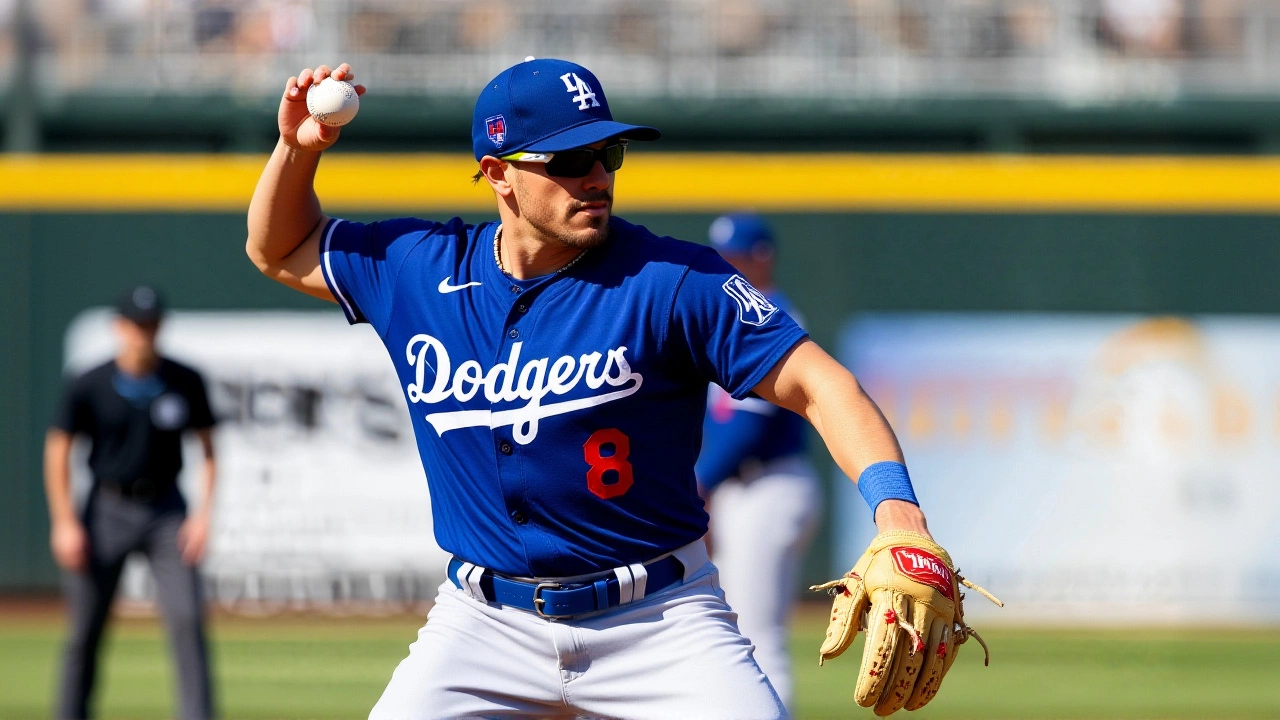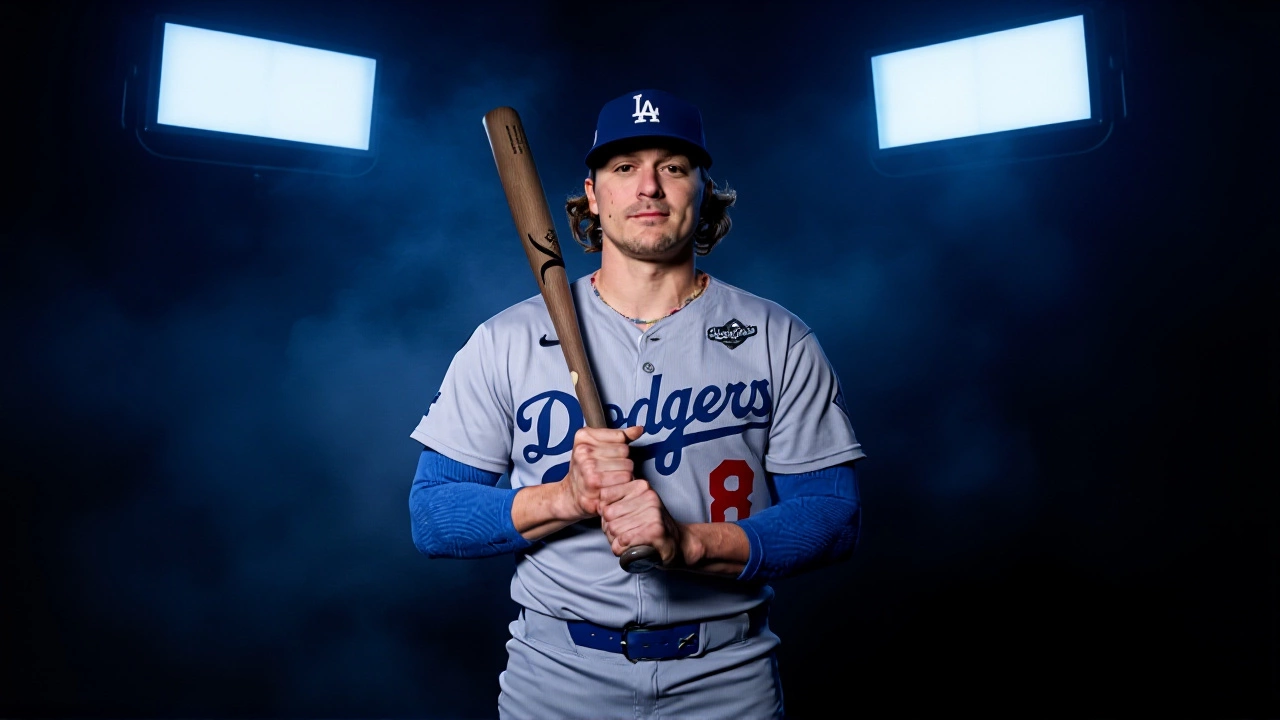When Kiké Hernández stepped into the batter’s box at Dodger Stadium on August 26, 2025, the crowd didn’t just cheer—they exhaled. After 51 days off, the 33-year-old utility man was back, swinging a bat without pain, playing third base with his trademark energy, and reminding everyone why he’s one of the most valuable pieces in the Los Angeles Dodgers’ puzzle. His 6-3 win over the Cincinnati Reds wasn’t just a victory—it was a statement. The Dodgers, clinging to a half-game lead in the National League West, were finally getting healthy. And Hernández? He was the spark they needed.
Playing Through Pain—Until He Couldn’t
Hernández didn’t just show up on August 25, 2025, after being activated from the 10-day injured list. He’d been playing through a throbbing left elbow inflammation for nearly a month before finally admitting defeat. "I played till, basically, I felt like I couldn’t even hold the bat anymore," he told reporters. "And I mean, it was kind of dumb on my end." That honesty, rare in professional sports, cut through the noise. He’d been hitting .195 with eight homers and 22 RBI in 72 games before the injury, but the pain had crept in after a slide into second base in late June. By July 6, he couldn’t swing without wincing. An MRI confirmed inflammation, and the Dodgers, cautious with their veteran, shut him down.Rehab That Worked—And a Brace That Looked Like Ohtani’s
His rehab was methodical. Five games with the Oklahoma City Baseball Club, the Dodgers’ Triple-A affiliate, where he hit .357 with two doubles and three RBI. He played third, left, and center—showing he could still cover ground. He wore a protective sleeve on his elbow in every rehab game except one. "I felt fine without it," he said. "But I’m not risking it. Hopefully, the brace makes me like Shohei [Ohtani]." The comparison wasn’t just for laughs. Ohtani’s elbow brace has become iconic. Hernández, ever the character, was blending humor with pragmatism.Who Got Sent Down? And Why It Matters
To make room, the Dodgers designated 26-year-old Buddy Kennedy for assignment. He’d played seven games, going 1-for-17. Not terrible, but not what the team needed now. With Hernández back, and Dave Roberts hinting at using him more in the outfield, Kennedy’s utility role became redundant. Roberts, 52, didn’t mince words: "We’re getting healthier. I appreciate the guys grinding through this, but it’s nice seeing the guys coming back."
Why This Isn’t Just About One Player
The Dodgers entered August 26 with an 82-51 record—just 0.5 games ahead of the San Diego Padres. Hernández’s return wasn’t a luxury; it was a necessity. His versatility—playing six positions in 2025—gives Roberts flexibility in late-game situations. And with Teoscar Hernández struggling in right field, Kiké’s defensive range could be the difference in tight games. He’s not a power hitter anymore, but he’s a table-setter, a clutch hitter with runners on, and a leader in the clubhouse.What’s Next? A Wave of Returns
Hernández isn’t the only one coming back. Third baseman Max Muncy, sidelined since mid-August with an undisclosed injury, is expected to begin a rehab assignment during the team’s East Coast trip next week. And on August 29, Blake Snell, the 35-year-old lefty, will return from paternity leave to start against the Arizona Diamondbacks. His wife had just given birth to their second child. These aren’t just roster moves—they’re emotional milestones.At Dodger Stadium, where the air smells like popcorn and sunscreen, and the scoreboard glows under the California night, the Dodgers aren’t just chasing a playoff spot. They’re chasing momentum. And Hernández, with his brace, his grin, and his 5-for-14 rehab slash line, is helping them get it.

Behind the Scenes: The Medical Team’s Role
The Dodgers’ medical staff, led by head athletic trainer Stan Conte, played a quiet but critical role. Hernández’s recovery followed a strict protocol: rest, then light throwing, then fielding grounders, then live batting practice—only when pain-free. "We didn’t rush him," Conte told MLB.com on August 20. "We knew his value. We just needed him healthy, not just available."It’s a lesson in patience. The Dodgers, valued at $4.84 billion by Forbes in 2024, don’t just spend money—they invest in process. President Stan Kasten and president of baseball operations Andrew Friedman have built a culture where recovery isn’t a setback—it’s part of the strategy.
Frequently Asked Questions
How did Kiké Hernández’s elbow injury affect the Dodgers’ lineup depth?
Hernández’s absence forced the Dodgers to rely on less experienced players like Buddy Kennedy and Austin Barnes at multiple infield positions. His return restored versatility, allowing manager Dave Roberts to shift players like Teoscar Hernández to the outfield and use Mookie Betts more flexibly. Without Kiké, the Dodgers had only two reliable utility players—now they have three, which is crucial in a tight division race.
Why was Buddy Kennedy designated for assignment instead of another player?
Kennedy, acquired from the Blue Jays, played only seven games and went 1-for-17 at the plate. With Hernández returning and capable of playing both infield and outfield, Kennedy’s limited offensive production and lack of defensive specialization made him expendable. The Dodgers prioritized immediate impact over roster flexibility.
What’s the significance of Kiké Hernández playing third base after being primarily an outfielder?
Hernández has played every position except catcher and pitcher in his career. His return to third base gives the Dodgers a defensive upgrade over players like Gavin Lux, who struggled with consistency at the hot corner. His experience in high-leverage situations makes him ideal for late-game substitutions, especially against right-handed power pitchers.
Could Hernández’s elbow injury be a long-term concern?
While the inflammation has resolved, players over 30 with elbow issues often face recurring problems. Hernández’s age and history of playing through pain raise flags, but his rehab success and lack of structural damage suggest he’s in the clear for 2025. The Dodgers will monitor his workload closely, especially during the playoffs.
How does this impact the Dodgers’ chances in the NL West?
With Hernández back, the Dodgers’ offense gains a spark and their defense tightens. They’re now 82-51, leading the Padres by half a game. In a division where every win matters, his ability to hit in clutch spots and play multiple positions could be the difference between a division title and a wild-card berth.
When will Max Muncy and Blake Snell return?
Max Muncy is expected to begin a rehab assignment during the Dodgers’ upcoming East Coast trip, likely starting around September 3. Blake Snell returned to start against the Arizona Diamondbacks on August 29, 2025, after paternity leave. Both returns will further strengthen the roster as the team enters the final stretch of the regular season.